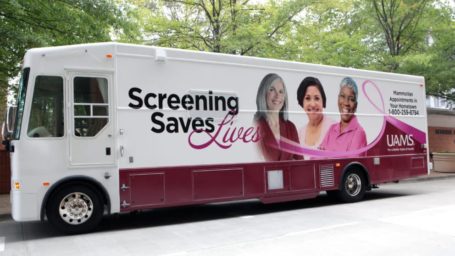Program Leaders


Mission Statement
The main mission of this program is to address cancer health disparities in Arkansas.
Specific Aims: The overarching goal of the Cancer Prevention and Population Sciences Program is to reduce cancer burdens for Arkansans through discovering etiologies of cancer, examining ways to effectively implement cancer prevention measures and conducting interventional studies to reduce cancer incidence. To achieve this goal, research in the Cancer Prevention and Population Sciences Program has the following aims:
- Aim 1: Reduce cancer incidence and progression by identifying etiological and risk factors.
- Aim 2: Develop and test implementation methods of evidence-based dissemination strategies designed to promote cancer prevention and early detection.
- Aim 3: Develop interventions for reducing cancer occurrence and recurrence.
Primary Areas of Research

Reduce Cancer Incidence and Progression
Identify etiology and risk factors and develop and implement novel strategies/interventions to reduce cancer risk and improve cancer outcomes.

Decrease Regional Cancer Disparities
Develop and test implementation methods of evidence-based dissemination strategies designed to promote cancer prevention and early detection.

Understand the Role of Immune System in Cancer Development
Develop and test immune-mediated interventions for preventing cancers and recurrence of cancers, as well as reducing progression of cancers in a watchful waiting state.
Arkansas Rural Community Health Study
Welcome to the Arkansas Rural Community Health Study, formerly known as the Spit for the Cure. In order to continue our research efforts, it is important that you provide us with your updated contact information. Providing your updated information, just like your enrollment in the study itself, is completely voluntary and will not affect your medical care now or in the future.
Learn MoreFeatured Publications
- Dai L, Wilson LG, Nakagawa M, Qin Z. Coinfections with additional oncoviruses in HPV+ individuals: Status, function and potential clinical implications. J Med Virol. 2024;96(1):e29363. doi:10.1002/jmv.29363
- Korn AR, Walsh-Bailey C, DelNero P, et al. Social determinants of health and US cancer screening interventions: A systematic review. CA Cancer J Clin. 2023;73(5):461-479. doi:10.3322/caac.21801
- Owsley KM, Bradley CJ. Access To Oncology Services In Rural Areas: Influence Of The 340B Drug Pricing Program. Health Aff (Millwood). 2023;42(6):785-794. doi:10.1377/hlthaff.2022.01640
- Palefsky JM, Lee JY, Jay N, et al. Treatment of Anal High-Grade Squamous Intraepithelial Lesions to Prevent Anal Cancer. N Engl J Med. 2022;386(24):2273-2282. doi:10.1056/NEJMoa2201048
- van der Plas E, Modi AJ, Li CK, Krull KR, Cheung YT. Cognitive Impairment in Survivors of Pediatric Acute Lymphoblastic Leukemia Treated With Chemotherapy Only. J Clin Oncol. 2021;39(16):1705-1717. doi:10.1200/JCO.20.02322
- Park YM, Bookwalter DB, O’Brien KM, Jackson CL, Weinberg CR, Sandler DP. A prospective study of type 2 diabetes, metformin use, and risk of breast cancer. Ann Oncol. 2021;32(3):351-359. doi:10.1016/j.annonc.2020.12.008
- Swindle T, Zhang D, Curran GM, et al. A mixed-methods protocol for identifying successful sustainability strategies for nutrition and physical activity interventions in childcare. Implement Sci Commun. 2021;2(1):8. Published 2021 Jan 14. doi:10.1186/s43058-021-00108-x
- Leung YK, Biesiada J, Govindarajah V, et al. Low-Dose Bisphenol A in a Rat Model of Endometrial Cancer: A CLARITY-BPA Study. Environ Health Perspect. 2020;128(12):127005. doi:10.1289/EHP6875
- Jenjaroenpun P, Wanchai V, Boysen G, Nookaew I, et al. Decoding the epitranscriptional landscape from native RNA sequences. Nucleic Acids Res. 2021;49(2):e7. doi:10.1093/nar/gkaa620
Meeting Time and Location
The Cancer Prevention and Population Sciences Program meets monthly on the 2nd Tuesday at 12:00pm in the Betsy Blass Conference Room on the 10th floor of the Cancer Institute.
